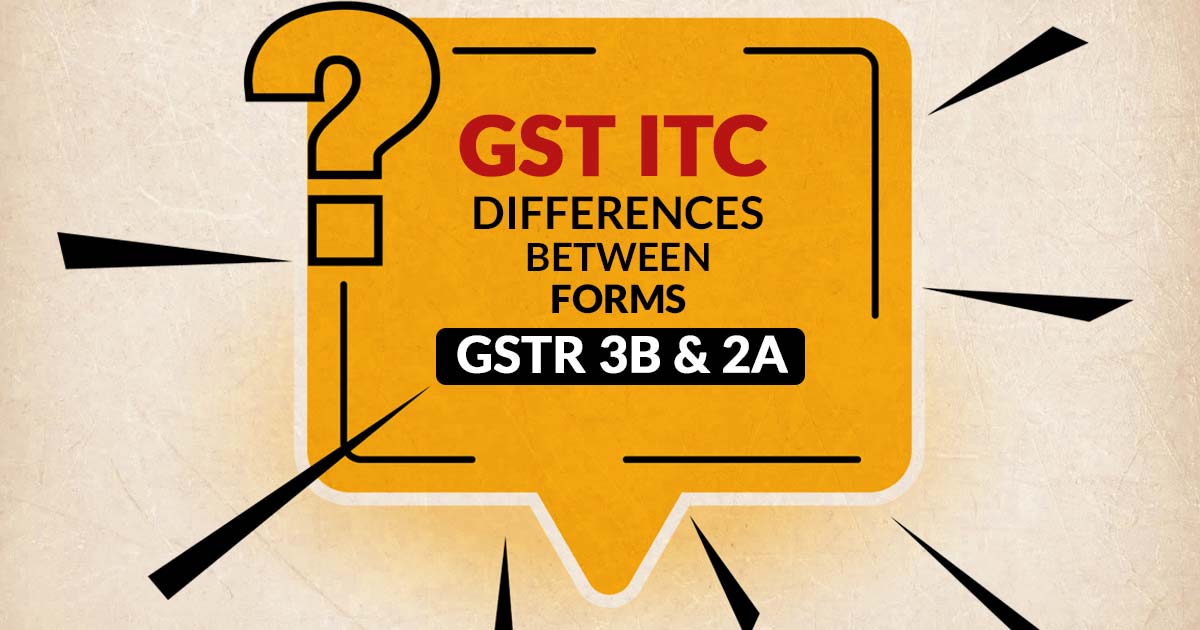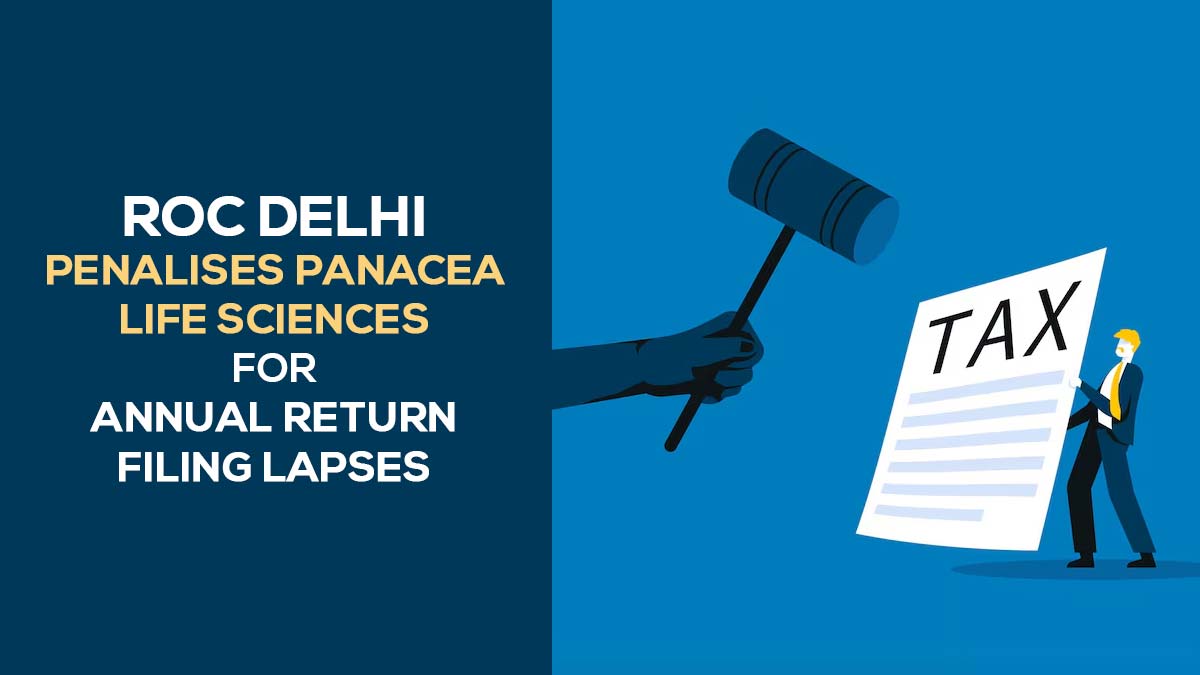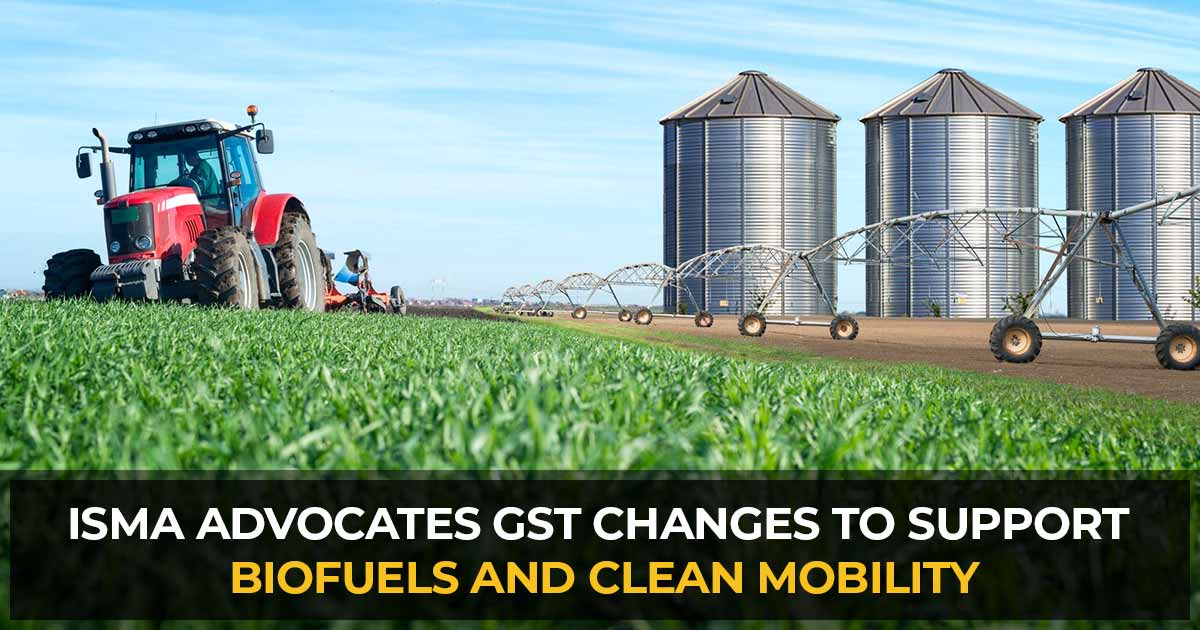
Scrutiny notifications and intimations have been circulated recently, suggesting that the department is requiring taxpayers to reverse the excess input tax credit claimed in Form GSTR 3B as compared to credits shown in GSTR 2A. How reliable are such communications? Is the taxpayer compelled by law to reverse such credits? We shall go over the legal provisions to better comprehend this.
The conditions to claim ITC were merely four under section 16(2) of the CGST Act, 2017 until December, 31st, 2021 mentioned as-
- (a) The recipient is in possession of the tax invoice or debit note that the supplier furnished.
- (b) the goods or services or both would be obtained by the recipient.
- (c) Supplier has filed the taxes and
- (d) Recipient has furnished his returns.
For the Financial years 2017-18, 2018-19, 2019-20, 2020-21, and 2021-22 till December 2021, the recipient was needed to fulfil exclusively these 4 conditions to claim ITC.
But from October 9, 2019, Rule 36(4) of the CGST Rules 2017 was inserted in which the credits were confined in excess of 20% of the eligible credits shown in GSTR 2A which does not get uploaded via the suppliers. from 01.01.2020 this limit was reduced to 10% and from 01.01.2021 to 5%. The rule gets revised from 01.01.2022 eliminating the choice to claim the GST ITC in excess.
Currently, the question arises is whether Rule 36(4) is constitutionally valid. The credits that the act does not empower do get restricted by the rule. CGST act provides four conditions to claim ITC and the act does not restricts the credits anytime based on GSTR 2A for at least until 31st December 2021.
Refer to the Hon Supreme Court Judgement for the case of Bharti Airtel Limited in which the court would have specified that GSTR 2A would merely be made for the purpose of reference and on the grounds of self-assessment the assessees needed to claim for the ITC.
GST ITC Availability Can’t be Limited by a Rule When There is No Legislation Refusing It
The availability of the ITC can take place exclusively if the supplier has filed his taxes, Clause (c) of sub-section 2 of section 16 of the CGST Act stated. Law does not secure any provision or no provision is there in the portal for the recipient to verify if the supplier has filed the taxes precisely. It could be verified if the supplier has furnished his Form GSTR 1 or GSTR 3B, however the same does not necessarily prove that the supplier has or has not filed the taxes related to the recipient invoices. Although these invoices don’t show up in the recipient’s GSTR 2A, is it possible that the supplier had paid the taxes? The following circumstances stated:
- The supplier rather than filing as B2B has mistakenly furnished B2C in GSTR 1 and filed the taxes in GSTR 3B.
- The recipient’s GSTN was misrepresented by the supplier.
- The supplier may have stated CGST and SGST or vice versa in place of IGST.
Even if the supplier in the aforementioned cases paid the taxes, they won’t show up on the recipient’s GSTR 2A.
When the system does not allow the recipient to check the supplier’s payment of taxes, how can they now doubt the validity of the claim? The taxpayer cannot be harmed as a result of the government’s system failure.
When GST was adopted, the initial provision was to include GSTR 1, GSTR 2, and GSTR 3 returns, but the final two never saw the light of day, and the implementation date was repeatedly extended for the convenience of policymakers until GSTR 2 and GSTR 3 were abolished one day.
Difference Between GSTR 3B and 2A Forms
If these two returns had existed, the receiver would have been able to monitor the payment of taxes as well as notify the supplier if the invoices were not uploaded or if there was a revision. The taxpayers cannot be made scapegoats for the government’s inability to execute the systems as originally planned.
On 27th December 2022, Circular 183/15/2022 was issued by CBIC that specified the way to deal with the mismatch in the ITC claimed in FORM GSTR-3B in comparison to that described in FORM GSTR-2A for FY 2017-18 and 2018-19.
What Does the GST Circular Say?
According to the circular, if the difference with a supplier exceeds Rs. 5 lakhs, then a certificate from a Chartered Accountant or a Cost Accountant is required, attesting that the supplier actually made the supplies described in the invoices of the supplier to the registered person in question and that the tax on those supplies was paid by the supplier in his return in Form GSTR 3B. How can a cost accountant or chartered accountant confirm that the supplies have in fact been made and taxes have been paid? Second, how can a circular be introduced without any legal authority? How can a circular provide such instructions if the law does not mandate such a procedure?
The circular further states that if the difference is less than Rs. 5 lakhs, the supplier in question must make a self-declaration stating that the supplies were really made to the registered person and that the tax on those supplies was paid by the supplier in his return in Form GSTR 3B. These circulars, in my opinion, have no legal standing.
According to me, if the registered person satisfies all four requirements listed in Section 16 subsection 2 through December 31, 2021, he is qualified to claim and use the input tax credit.
From 1st January 2022, they inserted clause (aa) in Section 16 subsection 2 of the CGST Act, which reads as follows:
“The details of the invoice or debit note referred to in clause (a) has been furnished by the supplier in the statement of outward supplies and such details have been communicated to the recipient of such invoice or debit note in the manner specified under Section 37”.
Important: All About GST New Rule 88C for Mismatch GSTR-1 vs GSTR-3B
They have given legal validity to the requirement that input tax credits can be claimed only if they appear in GSTR 2A by including the aforesaid clause in the Act itself. This change takes effect on January 1, 2022, making it abundantly apparent that there was no provision in law prior to that date to limit the input tax credit based on GSTR 2A.
It is recommended that you respond to all correspondence properly, and if the proper officer is not happy with your response, the situation can be pursued further. There is always a ray of hope at the end of the tunnel.
Instances of GST ITC Discrepancies
Case 1: The supplier has not submitted the GSTR-1 form for the respective tax period, but they have filed the GSTR-3B form for that period. Consequently, the supply for that tax period is not shown in the recipient’s GSTR-2A.
When the registered person claims Input Tax Credit (ITC) for a particular financial year in GSTR-3B, and the claimed amount is more than Rs. 5 lakhs lower than the available ITC in GSTR 2A, the proper officer will request the registered individual to provide a certificate from a Chartered Accountant (CA) or Cost and Management Accountant (CMA) regarding the particular supplies. This certificate must verify that the supplier has duly provided goods or services to the registered individual and that the tax for those supplies has been paid in the GSTR-3B return.
The certification provided by the Chartered Accountant (CA) or Cost and Management Accountant (CMA) should not contain the Unique Document Identification Number (UDIN). Furthermore, the CA or CMA is required to authenticate the UDIN by cross-checking it on the official websites of either the Institute of Chartered Accountants of India (ICAI) or the Institute of Cost Accountants of India.
Case 2: The supplier has submitted both the GSTR-1 form and GSTR-3B form for the applicable tax period, but a particular supply is not shown in the GSTR-1 form. Thus, such supply does not appear in the recipient’s GSTR-2A.
When the registered person claims ITC in GSTR-3B for a financial year, and the claimed amount is up to Rs. 5 lakhs lower than the available ITC in GSTR 2A, the Proper Officer will urge the individual demanding ITC to furnish a certificate from the concerned supplier. This certificate must verify that the supplier has duly provided goods or services to the registered individual and that the tax for those supplies has been duly paid in the GSTR-3B form.
It must be noted that for the FY 2017-18 period, according to Section 16(4) of the CGST Act, there is a maximum time period provided under which a registered individual can claim ITC. The benefits allowed under Section 16(4) will be forfeited if the GSTR-3B return is submitted after the prescribed deadline from September 2018 until the filing of the return for March 2019. This condition is applicable only if the details of such supplies in the GSTR-1 form have not been furnished by the due date for filing GSTR-1 for the month of March 2019.
Case 3: The supplier has submitted both the GSTR-1 form and GSTR-3B form for the respective tax period, but a particular supply is not stated in the GSTR-1 form. Consequently, such supply is not shown in the recipient’s GSTR-2A.
Giving an Important decision, the Kerala High Court single bench noted that the purchaser cannot be denied Input Tax Credit (ITC) solely based on the absence of the transaction in the GSTR-2A Form.
Diya Agencies, the applicant, requested an input tax allowance of Rs. 44,51,943.08/- for the Central Goods and Service Tax (CGST) and State Goods and Service Tax (SGST). Nevertheless, the surplus demand of Rs. 1,04,376.05/- as CGST and an equivalent sum as SGST credit were refused, asserting that according to the GSTR 2A for the invoice supply, the taxpayer is solely qualified for the input tax sum reflected in GSTR 2A.
Furthermore, the highest court in The State of Karnataka v. M/s. Ecom Gill Coffee Trading Private Limited has ruled that simply claiming to be a genuine buyer is insufficient to prove the legitimacy of Input Tax Credit (ITC) under Section 70 of the Karnataka Value Added Tax Act, 2003. The load of proof lies with the dealer demanding the ITC, and the Revenue cannot be held responsible for providing evidence.
Case 4: The supplier has filed the GSTR-1 form and GSTR-3B for the tax period, but an incorrect GSTIN number has been generated for that supply in GSTR-1.
Importantly, the proper officer of the registered recipient will inform the jurisdictional officer of the registered individual whose GST Identification Number (GSTIN) has been wrongfully mentioned concerning the incorrect ITC demanded by the recipient in their GSTR-3B and disallow it.
However, the approval to claim ITC by the registered recipient will not be dependent on the actions carried out by the authority of the registered individual who wrongfully demanded the ITC. Such actions will be carried out separately.
Additionally, the circular also mentions that the explanations provided are specific to genuine errors made in reporting during FY 2017-18 and 2018-19. These guidelines possess an explanatory character and ought to be implemented considering the factual details and context of each specific situation, refraining from utilizing them to determine the provisions of the law.
All in all, the difficulties faced during the initial phase of the introduction of the Goods and Services Tax (GST) in the fiscal years 2017-18 and 2018-19 resulted in a comprehensive effort to resolve inconsistencies in the reconciliation of Form GSTR-2A and GSTR-3B. The complications related to demanding Input Tax Credit (ITC) were emphasized due to problems with Section 16 of the CGST Act. In response, Circular No. 183/15/2022 was then released to ensure consistency in dealing with such issues faced by taxpayers.
The presented instances make clear the complex features of GST ITC discrepancies and the meticulous procedures necessary for their resolution. It is worth noting that getting certificates from Chartered Accountants or Cost and Management Accountants, coupled with strict adherence to prescribed timelines outlined in Section 16(4) of the CGST Act, further adds to the intricacy of the process. Moreover, the legal precedents established by the Kerala High Court and the Supreme Court underscore the significance of precision and diligence when claiming ITC.
Given that these instructions pertain to legitimate differences during the financial years 2017-18 and 2018-19, enterprises and tax professionals must cautiously navigate the complexities present in each scenario. The directives outlined in the circular provide a structure for resolving disparities while acknowledging their unique and case-specific nature.
Looking ahead, both businesses and tax authorities must persevere in adapting and enhancing their methodologies in response to evolving GST laws. This necessitates cooperation among all involved parties, a proactive dedication to transparency, and a proactive attitude towards compliance, ultimately fostering a more robust and efficient GST ecosystem down the line.









